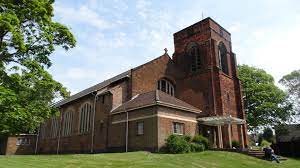Christmas in a Nutshell

Christmas isn’t just a matter of the baby Jesus being born in Bethlehem. It all starts long before that.
In the beginning God caused the universe to be created
Now we don’t want to get into a debate about the Bible versus science. This is really a non-issue. Science researches and reveals the mechanisms by which things happen but not why. God created the universe as an act of will. That’s the point. The time frame and the how is interesting but not central.
In the vastness of this universe our solar system including our planet came into being and became populated by living organisms including humans. Again the time frame isn’t important in the context of this article. Humans are unique in that all creation, certainly as far as we know. In what way? We were created with the potential to become like God himself, God caused us to have; the ability of abstract reasoning, a perception of right and wrong, freewill to choose and, most of all, what we call a soul, the essence of what we are existing beyond our physical being.
That’s where the problems started. Rather than following God’s plan, human beings began to use their freewill to go their own way, to choose the ‘wrong’.
Now God hadn’t created us as some sort of celestial experiment. He was heavily invested in us and desperately wanted and continues to want us succeed and to ultimately become like Him. Throughout history God intervened numerous ways (these can all be found in the Old Testament section of the Bible) but they all ultimately failed and humanity continued on its course of self destruction. So finally God decided to do the job himself.
This is where Jesus comes in. God became Emmanuel, which means: ‘God with us’ in the form of a baby born the a poor couple in an obscure town in the tiny corner of the Roman Empire.
He did this for two reasons (1) to live as a human being to demonstrate how we should live our lives (2) to rebuild the bridge back to God so that we could get across the gulf we’d created.
But that’s all a later chapter
The whole initiative is summed up in one of the best know passages in the whole Bible:
God so loved the world that He sent His one and only son that whosoever believes in Him shall not perish but attain eternal life’.























